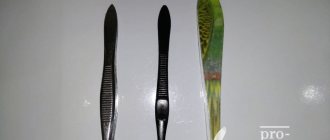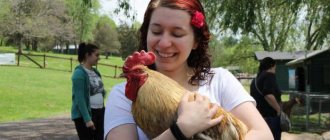Causes
The most common reason is habit. A person twirls his hair at a moment of thoughtfulness, awareness of some problem, or prolonged reflection. This simple action helps you concentrate on your thoughts and stop reacting to external stimuli.
Other reasons are presented below.
- The desire to calm down. The sensation of twisting your hair is reminiscent of a soothing pat on the head or a relaxing massage. That's why children of preschool and primary school age can use this relaxation method. Sometimes it’s easier to cope with separation from your mother.
- Fall asleep faster. The baby plays with his hair when he falls asleep. Gradually he falls asleep without the help of his parents. Usually this bad habit is eradicated with age.
- The desire to escape from your problems. As a child gets older, the number of stressful situations increases. The habit of touching hair develops into a compulsive action. A vicious circle is formed: he gets a little nervous - he twirls his hair - he realizes that this is bad - he gets nervous.
- Another reason is a feeling of defenselessness. Being very frightened, the baby decides to pull his hair. He thinks that this will make the situation safer and help get rid of obsessive fear.
- It happens that he begins to pull not only his own hair, but also other people’s. This is how a child often hurts his mother without even realizing it. Sometimes he uses his fingernails, literally tearing out entire clumps of hair. And there is only one explanation for this - he is scared and wants his parent to protect him from everyone.
I'm spinning... I'm twisting... Do I want to calm down?
It would seem, what’s wrong with it when a person twirls his hair ? But in fact, in most cases, this harmless action, especially when performed by an adult, is not at all harmless. No one can say for sure why and why we like to “tangle”, so to speak, our curls. This problem especially concerns women, perhaps because they really have something to twirl on their heads, but also, in my life, there were also men who unintentionally twirled real whirlwinds on their heads, doing it so often that bald patches appeared.
This question began to bother me when I noticed this bad habit in my son. This happened completely unconsciously, and over time I even managed to understand what exactly made him want to spin another whirlwind. In those moments when Nikita was embarrassed, worried or lying, he began to brutally twirl his thick, wire-like hair around his finger. After carefully studying the information on the Internet, I realized that these actions could develop into a serious bad habit and began to wean him off it.
To begin with, I convinced my child that this habit leads to his hair starting to stick out in different directions , especially his bangs, and this is very ugly. At that time, he liked his classmate Nastya, and I had to constantly remind him that in order for the sympathy to be mutual, he must be a neatly combed boy. This was enough for a while, and I began to notice that Nikita was twisting his hair much less often, but then the habit returned again. My husband and I began to constantly make comments to him, but as soon as the child was alone in the room, he again began to “twist his curls.” The only more or less effective measure in this situation could be a very short haircut, but the son categorically did not agree to such a radical measure, for the thousandth time, promising that he would not do anything else.
Time passed, the child grew up, and with him the habit grew up. Now Nikita himself didn’t like the fact that his hair grew in different directions, and he began to devote a lot of time to his hairstyle, styling his bangs for half an hour every morning. But this didn’t help either, because at the first excitement, just as adults grab a cigarette, a bottle, or bite their fingernails, my son began to twirl his rather short hairs around his fingers. In the end, we still managed to convince him to get a short hairstyle, at least for a while, until he learns to calm himself down with something else.
In short, only six months later, I was able to breathe more or less calmly. My son stopped “curling” his head and no longer wrapped his hair around his fingers, but now I have another problem. If earlier, thanks to his bad habit, I immediately understood that he was lying or worried, but now it is no longer so simple. Moreover, maybe because of this, or maybe not, he has developed a new bad habit - lying, with or without reason... And now, I will have to wean him from lying. And I don’t even know... Maybe we shouldn’t have taught him not to twirl his hair?
Did you like the article? Tell your friends about it...
Symptoms
The compulsive action is so important that the inability to perform it is perceived as a threat to life. The need to constantly pull your hair occurs in stressful situations and is repeated. This may also be a reaction to chronic stress that the child cannot eliminate from his life (parental quarrels, peer bullying, problems at school).
If an uncontrollable action is interrupted, the child will do his best to look for a way to complete it: he will begin to twirl his hair a certain number of times or in some sequence. The baby will do this until he calms down completely.
Consequences
Any neurosis that is not diagnosed and treated in a timely manner significantly harms the child. The psyche at this age (preschool and primary school) is still fully formed, and the nervous system is unstable.
A lot of physical and mental energy is spent on compulsive action and thoughts about it. As a result, obsessive curling of curls in children can lead to the following consequences:
- decreased capabilities of all cognitive processes (memory, attention, thinking);
- the child gets tired quickly and is unable to concentrate on lessons;
- sleep disorders, nightmares;
- lack of contact with other children (he does not play, does not make friends with them, because they can tease him);
- general isolation, lack of contact with adults.
Hair follicles suffer from constant tension. As a result, the hair breaks, becomes dry, lifeless and falls out. In damaged areas, curls may not grow back well for the rest of your life.
The worst thing is if the baby starts pulling out hair on his head.
This occurs when a child begins to twirl their hair around their thumb. This habit can eventually develop into trichotillomania. This is a type of auto-aggression when, in order to calm down, a person pulls out individual hairs or even tufts of hair on the body. In neglected situations, bald patches form. In such a situation it is no longer possible to cope without the help of a psychiatrist.
Psychology of the phenomenon
Psychologists say that the habit of touching your hair is formed in infancy and should go away by the school years. Most often, babies touch their heads to calm down and fall asleep. Older children cope with stress and nervous tension in this way.
The desire to curl your hair can be a consequence of serious psychological problems.
Children's habit
There is nothing wrong with an infant or preschool child acquiring a similar habit. For him, this is a kind of way to calm down, relax, and protect himself from the outside world.
Having noticed this, parents should have a conversation with the child, teach him to share his experiences with them and invite him to choose a different method of relaxation.
Many experts strongly recommend that parents contact a child psychologist as soon as possible. This should be done when the child still has the desire to curl his hair after he reaches 10 years of age.
Often in children, the habit of touching their hair develops into an obsessive disorder. In such a situation, parents have to seek help from psychotherapists in order to identify the cause of the problem and safely eradicate it.
To wean a girl from this manner, you need to give her a new haircut or an interesting hairstyle.
Under no circumstances should you ignore this behavior of a child. You cannot try to wean him from the habit by using physical force. If you focus on this action, the baby will begin to repeat it to spite the parents.
With the right approach to solving the problem, you can avoid negative consequences: various types of disorders, neuroses, complexities, deterioration of attention and baldness in the future.
What to do if a teenager twirls his hair on his finger
In adolescence, such a habit is not always a consequence of emotional experiences. Most often, girls try to create an attractive and mysterious image for themselves in this way. They do this in order to attract the attention of the opposite sex.
Periodically, those teenagers who have not yet come to terms with the physiological changes in the body can touch their hair and wrap curls around their fingers. In this case, psychologists advise parents to introduce their children to sports or handicrafts. Over time, the habit will disappear if your hands are constantly busy with something.
Why do adults twirl hair around their fingers?
Adult life involves stress, getting into awkward situations, conflicts at work, as well as various troubles and losses. If a person remains a child at heart who cannot live without parental care, then this situation largely explains the habit of touching one’s hair.
Most often, such actions appear in adults during stressful activities or in unforeseen situations. But even in such cases, you should get rid of the habit.
Effective methods to combat the habit:
- Get a short haircut, bio-perm or new hairstyle.
- Always wear long hair in a ponytail.
- Carefully study the consequences of this harmful manner.
Self-medication
Helping a child or even an adult on your own is possible. Especially if a girl or teenager suffers from this bad habit.
Some of the simplest but most effective methods are:
- creating beautiful hairstyles;
- braiding;
- beautiful hair curling;
- gentle and neat styling;
- short haircut (if it suits your face), etc.
The girl needs to be explained that pulling her hair is an indicator of her excitement and worry. That this does not always look attractive, and characterizes a person as nervous. It is necessary to delicately and very carefully explain to her that such similar actions make her image one-sided and demonstrate her as a complex, insecure person.
Some doctors advise patients to take up handicrafts. Hands will always be busy, and a person will have no time for curling curls. If the activity is really exciting, then getting rid of the problem will be easy.
Treatment options
The first step on the path to recovery is a consultation with a psychologist. It helps to find out the reasons for the development of such a habit. It will explain whether it is an addiction or just an alarming symptom.
If it's just a habit, a behavioral approach will do. In psychology, this is one of the methods of behavior management. You need to make sure that curling your hair leads to unpleasant consequences (not to punishment, but to not getting what you want). A short haircut helps, but only with the consent of the child.
If we are talking about compulsive actions or auto-aggression, you need to perform the following steps.
- Continue working with a psychologist until complete recovery or a significant reduction in the severity of symptoms.
- Drug treatment can be included.
- It is important to follow a daily routine. Do certain things on a clear schedule day after day (sleep, eat, walk). This routine is calming, because you know in advance what will happen and when. The nervous system receives a resource to overcome the disease.
Development occurs from a “point of rest,” that is, at a time when there are no shocks in life.
When curling your hair, there is no need to pull it back or make comments. This will push your child away from you and cause him to hide.
Calmly ask what is bothering the child. Try to discuss everything and show another way to calm down. The best thing to do is to hug him and tell him that he is the most wonderful and loved one.
Use your example to show how you can deal with anxiety, anger and irritation constructively. Not by swearing and screaming, but by expressing your emotions in the form of “I” messages. Phrases used in the process:
“I’m upset because...”; “I’m offended because...”; “I’m very glad, because...”, etc. Talk about feelings on your own behalf, meaning the baby’s experiences. The child must understand that he is not alone, he has support.
The most difficult thing in psychotherapy is to find out that parents themselves provoke the formation of stress. You need to be prepared for this, do everything in the interests of the family member.
During the period of therapy, there should be no scandals, major holidays, moves, or changes of schools in the family. Stress, both positive and negative, is detrimental in such situations.
Toddler habits
The baby's first attempts to curl his hair are observed between the ages of 0 and 3 years. The older the child, the more varied the reasons may be that lead to a burning desire to tug at his hair.
In order for your baby to forget about the habit once and for all, provide him with absolute comfort and consistency.
Very little crumbs thus calm down and lull themselves to sleep. In addition, the little man’s constantly repeating “rituals” help him feel safe in this big world.
What should mom do?
At this age, it is important to create conditions that would eliminate the need for self-soothing.
- Be sure to follow a daily routine; its violation will lead to the fact that the child will have no choice but to resort to obsessive movements that create predictability and stability in his life.
- Occupy your baby's hands with a soft toy or a thin flannelette diaper. Using a personal example, show how wonderful and fun it is to wrap a hare’s ears, a fox’s tail, or a corner of a diaper around your finger.
Note! The child will often pull such toys towards his face, so they should be small in size and free of hard and sharp parts.
- If the measures described above do not help and the child still twirls his hair on his finger, deprive him of the physical ability to do this. Put on a light flannel cap or cut your baby's hair.
If the habit itself does not seem like a threat to you, then getting hair into a child’s mouth can lead to “Rapunzel syndrome,” in which a hairball causes intestinal obstruction.
Oh, these schoolchildren!
The desire to be the best often develops into fear and anxiety.
Among schoolchildren, the habit of twirling their hair around their fingers is more common among girls and is nothing more than a way of psychological protection from others.
You can fight this scourge before the age of 10 only by instilling absolute self-confidence in your child. If your son or daughter starts the hand-curling mechanism before public speaking (reciting a verse in class), memorize the verse so that the child is confident that he knows it best.
From the age of 10, children become critical of their own appearance. At this moment, twirling your hair around your finger indicates a desire to change yourself.
Tips for parents:
- If we are talking about a girl's long-suffering braid, give the young fashionista safe curlers. New styling and the desire to maintain it will eradicate the bad habit.
- Discuss with your child the structure of hair and how careless handling causes damage to it.
A few words about teenagers
In adolescence, curling one's hair is a conscious act, an expression of the desire to attract the attention of the opposite sex.
This action is inspired by cinema and, according to teenagers, makes them mysterious, romantic and touching.
Your goal is to debunk this myth.
- Convince the young lady that such a movement harms her image and makes her look the same in all situations . Let him try to portray thoughtfulness, interest or offense in front of the mirror and come up with appropriate gestures and poses.
- Find a movie that always features a hero twirling his hair in a ridiculous way around his finger . In most cases, the script assigns him the role of a cutesy and not very smart character. Review the film with your child, making a slight emphasis or remark on the hero.
- Teenagers have another problem - they do not know where to “adapt” their elongated arms . Playing sports or dancing will help solve the problem; the most suitable types are skating, roller skating, swimming and tennis.
Instructions on how to deal with teenage awkwardness. Sports and only sports!
Cognitive behavioral therapy
This technique is effective in relation to both an adult and a child. The goal of cognitive behavioral therapy is to change the patient's negative attitude to a positive one. As a result, he should understand that he can calm down or get out of a state of stress without curling his hair.
At the beginning of the first session, the psychologist must find out the reasons for the development of OCD. To do this, he asks the client to share thoughts about the following:
- does he feel better from tugging at his curls?
- how he feels when he pulls his hair;
- does this action bring him pleasure, peace and tranquility;
- what will happen if he stops doing this;
- does he understand the consequences of this bad habit, etc.
In addition to an individual conversation, the patient must do homework. The speed of healing depends on the quality of their execution. They mean studying materials about the dangers of pulling hair: watching video lectures, reading specialized literature, communicating with trichologists.
The average duration of treatment is 5-6 sessions. They last 40-60 minutes and take place once a week. If the habit has already reached the stage of mental dependence, then the duration of the course can be 10 lessons.
Group therapy
This technique is not used with children, only with adults. The group usually consists of 10 people who are united either by common symptoms or by a common reason for the development of this bad habit.
All participants sit in a circle and begin to share their stories. This is the stage of acquaintance, the purpose of which is to position all patients towards each other in order to build constructive dialogues, because sometimes people with the habit of pulling their hair are antisocial.
Role-playing games may be carried out. The most popular is wish fulfillment if one of the patients starts doing these obsessive actions again.
Lectures are also provided during group classes. Their goal is to show a person that the habit of pulling one’s hair does not bring anything good, and it is better to get rid of it.
Group classes in various types of physical activity are possible: yoga, meditation, aerobics. The conversation participants also attend cultural events and communicate a lot with trichologists.
Art therapy
When communicating with children, such a conversation may not give the expected results, so it is easier to find out the causes and symptoms with the help of art therapy. She means depicting her problem using different types of art:
- drawing;
- theatrical action;
- singing;
- dancing;
- handicrafts, etc.
It is important to choose the activity that your baby loves most. Then he will not feel any tension when communicating with the doctor.
Visual art therapy is commonly used. The psychologist communicates with the baby, and he draws in the process. The doctor asks you to depict what is bothering him. There are no restrictions.
After this, the baby’s creation is evaluated. All lines, strokes, and ornaments are taken into account. Of particular importance is the color scheme, which makes it possible to assess the stage of the disease.
Next, the doctor asks the child to destroy his drawing in any way - tear it, trample it, wet it with water, etc. The main thing is to get rid of the image, and with it the problem.
Why you shouldn’t twirl your hair on your finger: signs against psychology
Some people think that twirling your hair on your finger is just a harmless habit that cannot cause any harm. In fact, it carries a lot of major psychological problems. Experts in the field of psychology unanimously say that if a child develops this habit at a young age, then by the time he enters first grade it will go away on its own.
Children often need to touch their hair to put themselves to sleep. In older age, this serves as a way to rid oneself of stressful situations, problems, internal experiences, fear of something, as well as complexes.
Curling your hair around your finger: an infant habit
It’s not at all scary if strands of hair curl around a finger occurs in school-age or even preschool-age children. This is how the child relaxes, calms down and protects himself from such an as yet incomprehensible world, where he still does not understand anything. To get rid of this habit, first of all, you should talk to your child frankly, ask what is bothering him and become a friend for him, whom he can rely on at any moment and tell him what is bothering him. We should find a different way of relaxation together.
Why do children under 3 years old curl their hair around their fingers?
You should not use force to stop your baby from twirling his hair on his finger . This way you will lose the child’s trust, but you will not rid him of the bad habit. Sometimes it happens that if you constantly focus on this action, the baby may do this to provoke you.
Child
Recommendations:
- Find a replacement. Distract your baby's attention with a toy.
- Play with small objects with your baby: assemble puzzles, Legos, make crafts from cereals, sculpt.
- Massage your baby's palms. Let him feel your warm hands and care.
- Communication is paramount. When the mother is constantly working, the child begins to worry, he has a desire to twirl his hair with his hands.
- In the crib in the evening, read interesting fairy tales to your baby, sing lullabies, kiss him when you leave and tell him that you love him.
- If all this does not help, you should go to the hairdresser and cut your hair.
Why do 4-6 year olds twirl their hair around their fingers?
At this age, this no longer serves as a soothing method. This is a way of protecting or checking one’s own security. It is especially common among girls, since their hair is longer than that of boys.
How to deal with the problem if your child still twirls his hair on his finger:
- Have a heart-to-heart talk. Keep track of exactly when your daughter begins to twirl her curls on her finger. Both the mood and the situation in which this is done are important. Make her feel that she is needed, she is safe, no one will hurt her. Instill in your child confidence in himself and his abilities.
- Explain to your child the essence of the problem. Why is this action not entirely correct, why should we get rid of it? Tell her that when she constantly touches her hair, it gets tangled, her hairstyle gets damaged, and it looks untidy. The conversation should be conducted in calm tones without shouting.
- Use a signal to remind you not to touch your hair.
Encourage and praise your baby, because this is his first achievement. This way you will motivate your child. It is especially scary when a child begins to tear out some of his hair due to nervous worries. In this case, the help of a psychologist is necessary. You should also seek help if you see that at 10 years old your child still has this habit.
Why do children from 7 to 13 years old curl their hair around their fingers?
This is the age when you can lose the trust of children in an instant. The most important thing now is to talk a lot about topics that interest the child, become his friend, listen to him, so that he feels important. Compliments are very important for girls at this age; parents should give them more often. This will make her feel confident that she is beautiful.
wind up
- This is a wonderful age when you can experiment with hairstyles and come up with something new every day. Moreover, in the world of modern technology it is quite easy to do this simply by watching a video tutorial on the Internet.
- If twirling her hair is a method of calming her, find an alternative and try to explain that she is distracted when she is trying to focus on something.
- Psychologists often recommend changing girls’ hairstyles or completely changing their image—cutting their hair. Thus, the habit itself will fade into the background.
But you should not ignore such obsessive behavior of your child, because the consequences can be serious. The most terrible ones include: various types of neurological diseases, isolation, self-doubt, shyness, baldness, impaired concentration and memory impairment.
Teenage child twirling hair on finger
Heightened experience or mysterious image?
- In adolescents, this is generally not associated with any disorders or abnormalities. Thus, young ladies try to create for themselves a certain mystery in their image, which the opposite sex likes so much and attracts it. But there are situations when the help of a psychologist and the support of parents is simply necessary.
- When a boy or girl has not yet realized that they have matured and that their appearance has changed, they cannot get used to it and take it for granted and therefore constantly touch their hair and twirl it on their finger. To protect a teenager from this harmful activity, you should keep his hands busy with drawing, handicrafts, and send him to a sports section.
Psychology of curling
, spending time with their mother will be an excellent alternative to curling their hair on their finger You can make hair care masks. But all components of the mask must be natural. Recipes can be found quite easily on the Internet with detailed step-by-step instructions.
Neuropsychologists have come to the conclusion that the young lady twirls her hair, giving the guy a sexual signal. She thus expresses her sympathy for him.











